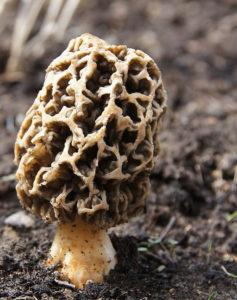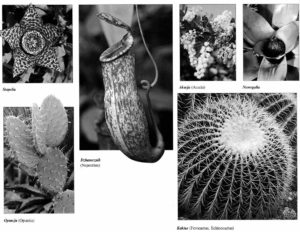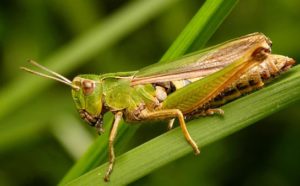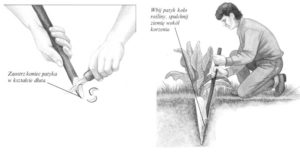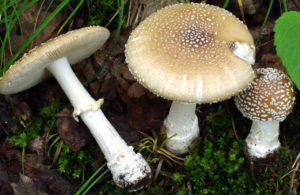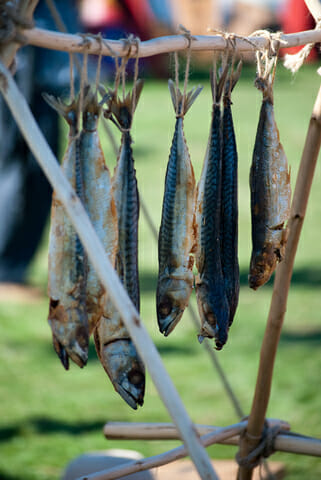Poza jałową pustynią zawsze możesz znaleźć w swoim najbliższym otoczeniu mnóstwo jadalnych i pożywnych roślin. Musisz jednak nauczyć się odróżniać rośliny jadalne od trujących, mogących wywołać chorobę. Niektóre jednak jadalne rośliny mają drobne, parzące włoski, które podrażniają jamę ustną i gardło, bądź też trujące nasiona. Są też rośliny które jedynie w określonych porach cyklu wegetacyjnego nadają się do jedzenia. Inne jeszcze, choć jadalne, są na tyle mało pożywne, że przy ich zbiorze zużywamy więcej kalorii, niż zyskujemy jedząc je.
ROŚLINY STREFY UMIARKOWANEJ
Unikaj zjadania starych pędów i korzeni, które mogą być łykowate i twarde, o nieprzyjemnym smaku. Młode pędy i rośliny są znacznie lepsze i zwykle pożywniejsze od starych, poza tym można je często jeść bez gotowania. To samo dotyczy liści. Zawsze wybieraj młode, zielone listki, odrywając je w całości od łodygi. Oto kilka roślin jadalnych strefy umiarkowanej.
Modrak morski (Crambe)
Zwany też kapustą morską, rośnie na wybrzeżach. Ma grube liście i podziemną łodygę, które można gotować i jeść. Roślina smakiem przypomina kapustę.
Rozchodnik (Sedum)
Rośnie na skalach, murach i dachach domów. Roślina ma ostry, pieprzny smak. Jej liście mogą być jedzone na surowo w postaci sałatki lub gotowane i dodawane jako przyprawa do zup.
Rdest (Polygonum)
Ta roślina występuje niemal w całej Europie, a gatunki pokrewne spotyka się w Ameryce Północnej. Rośnie na łąkach i polanach leśnych, osiąga wysokość do 60 cm. Łatwo ją rozpoznać po podłużnych, różnych kwiatostanach. Liście i pędy można gotować. Jadalne są również pieczone korzonki, ale trzeba uprzednio namoczyć w wodzie.
Gorycznik (Barbarea)
Występuje w Europie, Ameryce Północnej i Nowej Zelandii. Jej liście można zjadać m surowo lub ugotowane.
Portulaka (Portulaca)
Rośnie w nadbrzeżnych błotach zalewanych słoną wodą morską poniżej linii zasięgu przypływu. Liście można zrywać i zbierać w dowolnej porze roku. Dusi się je na wolnym ogniu, a potem zjada z dodatkiem soku cytryny. Portulaka nie może stanowić podstawy żywienia. Posilanie się wyłącznie jednym rodzajem pokarmu grozi niedożywieniem.
Podagrycznik (Aegopodium)
Tę zielną roślinę spotyka się w wielu rejonach Europy i Azji. Młode liście i ich ogonki smakują najlepiej, gdy pędy mają około 15 cm długości.
INNE ROŚLINY JADALNE
Wodorosty, takie jak Porphyria, można gotować, piec lub suszyć. Wytwarzają też rodzaj żelatyny, która nadaje się do przyrządzania deserów. Liści mniszka lekarskiego, popularnie zwanego mleczem (Taraxacum), można używać zamiast szpinaku, podobnie jak liści dziko rosnącego szczawiu (Rumex). Dziki czosnek, na przykład czosnek niedźwiedzi (Allium), jest doskonałą przyprawą.

.jpg)
